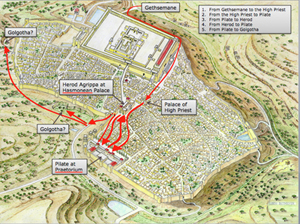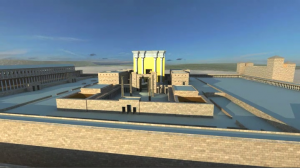The traditional Via Dolorosa or Path of Sorrows was fixed by monks in Western Europe in the eighteenth century and a devotional procession along this route is still led by Franciscans every Friday. In fact, the streets upon which Jesus walked lie about 10 feet below the level of these thoroughfares. By contrast, The Way to Golgotha is firmly based on Scriptural and archaeological evidence, with the claims of the two alternative sites for the crucifixion clearly evaluated.
Category: Products
Jerusalem in the time of Christ – New CD-Rom
Conveniently timed to coincide with the beginning of the academic year, our new CD-Rom is now available. We promised to bring out our immensely popular slide set, “Jerusalem in 30 A.D.”, in digital format and we hope you will be pleased with the result. Re-named “Jerusalem in the time of Christ”, this CD has a bumper 85 pictures, as compared to the original slide set’s 36.
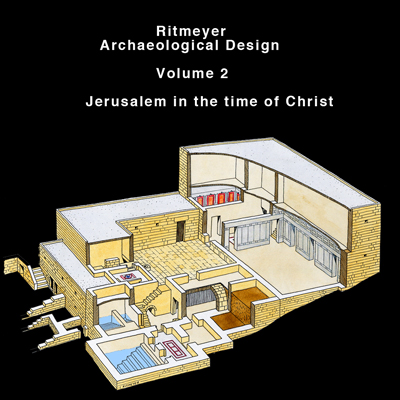
The advances of the digital age allowed us to focus much more on the city that Jesus knew. New drawings have been specially made in order to assist the viewer in opening a door to this historical world. One of our favourite new drawings shows a reconstruction of a small aedicule depicting the snake god of healing, Asclepius, found at the Pools of Bethesda. This find movingly reminds us how appropriate it was for Jesus to heal the paralytic man at this pagan healing centre, decisively refuting the claims of the serpent god.
The classic reconstruction drawing “Jerusalem in 30 A.D.,” which originally took 3 weeks to make, has been used as a base on which to create a ground-breaking series of slides showing The Way to Golgotha. Each of these five slides shows a stage in Christ’s last journey, beginning at Gethsemane and culminating at either of the two sites identified as the place of the empty tomb.
Other locations depicted include the Pool of Siloam (including the latest discoveries), the Essenes Gate, the Praetorium and Solomon’s Porch on the Temple Mount. Each picture is accompanied by a fully descriptive caption, with Bible references, allowing you to resurrect the place and period and to see for yourself how firmly the Gospels are rooted in the actuality of Jerusalem.
For those of you who may be wondering, the new cover illustration shows a reconstruction of the sumptuous mansion identified as having belonged to the High Priest Annas and the likely site of Peter’s betrayal of his master.
New RAD Web Design
Thanks to our web designer we have been able to revamp our website and we hope you like the new design. A reconstruction drawing of the Eastern Wall of the Herodian Temple Mount with the Temple appears in the header, which we plan to eventually rotate with other designs.
The upgrade is not meant to be a pretty face only, but we hope to put more information on the site. We have started with our new Showcase, giving you an idea of the projects we have been involved in over the last few years. Please have a look …
We also plan to list reviews of books, movies and software which we have found particularly helpful for students of Biblical Archaeology.
We are even more excited about putting up an archive with photographs of archaeological sites and reconstruction models and also, of course, reconstruction drawings. Thumbnails of the illustrations will be available for all to see, with an option to buy low resolution pictures for Powerpoint presentations and high resolution ones for publishers.
Many of you have asked why Vols. 2 and 3 are missing from the list of available CD-ROMs. Well, you won’t have to wonder much longer, as we are about to release these volumes. Volume 2 is called Jerusalem in the time of Christ:
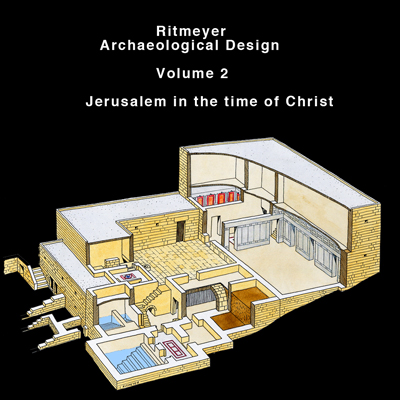
Volume 3 is called The Ark of the Covenant – Its Journey from Sinai to Jerusalem, and we will let you know as soon as they are available.
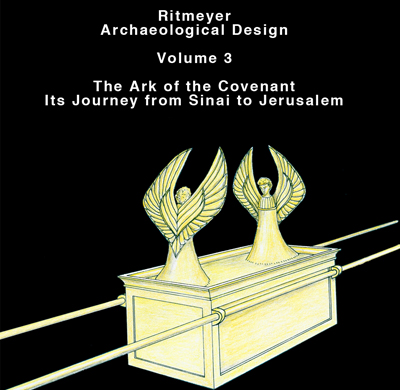
Many years ago, we produced slide sets on these subjects and now the time has come to go digital. Whereas the two slide sets contained only 36 slides, the new CD-ROMs will have many more, with new digital or digitally enhanced pictures.
Another presentation on the Seven Churches of Revelation is also in the works.
ESV Bible Atlas by Crossway
A few months ago, we received a pre-press copy of the ESV Bible Atlas to review:
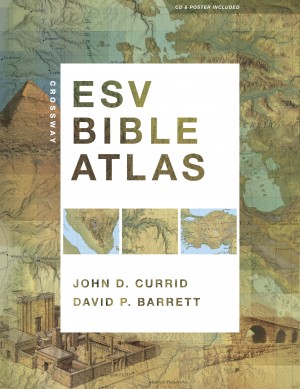
Already then, we were very impressed with this atlas and wrote the following endorsement:
“I had the privilege of being involved in the production of drawings based on the latest research for the ESV Study Bible. It is a joy to see these drawings plus the original ESV Study Bible maps, woven together with numerous new maps, brilliantly evocative photographs and useful indexes to make up the new Crossway Bible Atlas. This volume will become an indispensable companion for Bible students, fulfilling every expectation you might have of such a tool. Particularly innovative is the use of terrain imagery to facilitate the reader’s understanding of such Biblical viewpoints as that of Abraham from Hebron over the cities of the plain or Moses from Mt. Nebo.”
Justin Taylor, who was the managing editor of the ESV Study Bible, wrote this in his blog:
“One of the neat things for me is being able to see the ESVSB illustrations—of the tabernacle, the temples, Jerusalem at various times, etc—in great detail over a two-page spread on glossy paper.”
We agree that on this glossy paper, the reconstruction drawings look even better than in the Study Bible. We are further told that
The new Crossway ESV Bible Atlas (352 pages) will be shipping soon from Amazon.
The text of the Atlas was written by Professor John Currid (RTS-Charlotte, NC). The maps were done by David Barrett, who also served as the cartographer for the ESV Study Bible. Here’s what it contains:
175 full-color maps
70 full-color photographs
3-D re-creations of biblical objects and sites
indexes
timelines
65,000 words of narrative description.
“The atlas uniquely features regional maps detailing biblically significant areas such as Egypt, Mesopotamia, Italy, and Greece. It also includes a CD with searchable indexes and digital maps, and a removable, 16.5 x 22-inch map of Palestine.”
You can flip through some of its pages here
As he lives in the USA, Todd Bolen received his copy yesterday, we can’t wait to receive ours in the UK soon as well.
Solomon’s Temple and Herod’s Temple Mount
This is a post I am thrilled to be able to write! Followers of this blog will know that over the years, we produced educational slide sets that lecturers and teachers used to give presentations or to enhance their own presentations. We updated two of these to CD format and many of you wrote to say how helpful you found these. In fact, we received many communications begging us to transform the remaining slide sets into CDs. Pressure of other projects delayed this until recently, when further CDs were requested for a lecture tour.
We are pleased therefore to inform you that two more of these are ready, in time for the beginning of the academic year: Volume 4: The Archaeology of Herod’s Temple Mount and Volume 6: In Search of Herod’s Temple Mount. Do click on CDs under Product Categories to have a look.
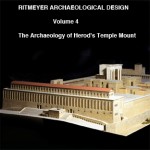
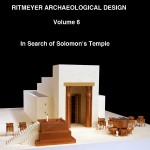
If you follow Temple Mount matters, you will know that this coming Thursday, July 30th, is Tisha be’Av, (the ninth day of the Jewish month Av), which commemorates the destruction of both the First and Second Temples on this same date (the First by the Babylonians in 586 B.C., the Second by the Romans in 70 A.D.). With the help of these presentations, you can, wherever you are, “Walk about Zion, and go round about her: tell the towers thereof. Mark ye well her bulwarks, consider her palaces; that ye may tell it to the generation following” (Psalm 48:12,13).
Hopefully, we will soon post news of the remaining two CDs.
A new Bible program
During the last eight months or so, we have worked as archaeological and historical consultants for a new digital Bible program, called GLO.
On the introductory page of the new website, it says: “Glo is an interactive Bible with a world of media, resources and tools to help you get closer to the Word of God”. The program will soon be available. GLO will prove to be very helpful for the Bible student who wants to know more about the Bible and the physical background on which the stories are played out.
Through 5 main “lenses”, Bible, Atlas, Timeline, Media and Topical, the Bible student will be able to browse the contents of this very useful program.
There are numerous virtual tours, high-res photos, vidoes, articles and maps which help bring the Bible to life. You can even share your personal notes with friends online.
More information will follow.
Free online version of the ESV Study Bible
During the month of March, anyone can access the ESV Study Bible for free at this website:
http://www.esvstudybible.org/online
It was a privilege to have worked on this wonderful project. This is what Justin Taylor (Project Director) wrote:
“The ESVSB was published just over four months ago and there are already 300,000 copies in print. We give God the honor and the praise, and we pray that God would use this resource to help edify and build up his church.”
The Messiah in the Temple
The Messiah in the Temple is an exciting project with the aim of developing a 3-D visual media of the Temple of Jerusalem. This project was conceived by the project manager Martin Severin. After reading Roger Liebi’s book of that name and my book “The Quest – Revealing the Temple Mount in Jerusalem”, he decided with the help of Christof Frank of digi mice GmbH to make a digital version of the reconstructed Herodian Temple Mount.
You can read more about the project on the The Messiah in the Temple website, where you can also download a larger video file.
Thanks to Justin Taylor, you can watch the video on YouTube:
The Temple Mount and the National Geographic
In May this year, I was asked to join the National Geographic team on a poster supplement for the December Issue of the magazine. The subject of the poster was the history and architecture of the Temple Mount. I had the opportunity to meet with Fernando Baptista and Patricia Healy (NGS Senior Graphics Editor and Art Researcher respectively) in New York during a conference on “The Temple of Jerusalem: From Moses to Messiah”. See my earlier post.
They wanted my help with the creation of a NG poster on the Temple Mount and also came to see the models I had designed and which were then on show in the Yeshiva University. This interesting poster is now available in the December issue. The poster is called “Jerusalem’s Holy Ground” and shows, from top to bottom, the Binding of Isaac, The Rock, Solomon’s Temple, Herod’s Temple Mount and the Temple Mount during the Early Muslim period. It also shows cut-away drawings of Solomon’s Temple, Herod’s Temple and the Dome of the Rock and has a timeline on the side. The other side of the poster shows a magnificent map of the Eastern Mediterranean region, named “The Crucible of History”. The poster is beautifully produced and it is worthwhile getting the National Geographic December issue if you don’t have a subscription. The magazine has for its main theme, The Real King Herod, architect of the Holy Land.
Here is a view of the poster, reproduced with permission of the National Geographic Society:
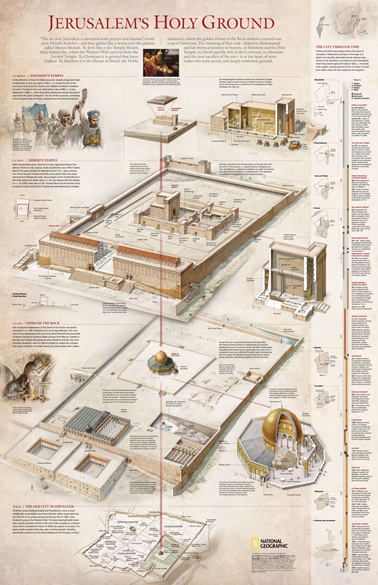
Temple Mount Mikveh
Zachi Zweig, an archaeologist who is involved with the Temple Mount Sifting project, kindly send me the paper [in Hebrew], which he gave at the recent conference on the Temple Mount at the Bar-Ilan University. I commented on this find in an earlier post. Here is an abstract:
“Hamilton describes the discovery of a plastered cistern that was excavated below the easternmost door of the present El Aksa mosque, north of Cistern 9 [according to Warren’s numeration – see map]. The descent to [the cistern] was from west to east by means of a flight of steps, with the bottom step some 3 m. [10 feet] below the present floor of the mosque. The remains of some five steps were discerned, which were built against a plastered wall, which was about 90 cm wide [3 feet].
Unfortunately, Hamilton did not publish additional details – not one picture or plan. However, in the Mandatory Archives there was a photograph of the five steps, which descend to the opening of the cistern. The top of the steps is located some 1.50 – 2 m. [6-7.5 feet] below the present surface and to the south of it and adjacent to it, although at a little distance, there is a thick wall. This is most likely the same cistern. The steps appear to have been cut out of the rock and this points to the fact that the level of the top of the rock in this location is at about 1.50 m. [6 feet] below the level of the present pavement.”
The exit of the cistern is located deep below the level of the floor of the mosque. Hamilton dated it to the late Roman period. However, as the remains of a dividing wall can be discerned, Zachi concluded that it could have been a mikveh (Jewish ritual bath), see picture below:

It is located a little to the east of the underground passage which leads up from the Double Gate to the Temple Mount. Ronnie Reich has identified Cistern 6 and 36 as mikva’ot, but these are located in the original Square Temple Mount. These could have been added in the Second Temple period, as they are located close to the surface and no First Temple period mikva’ot are known.
This latest one, however, is located much lower down and in the Hasmonean extension of the Temple Mount and may therefore have been one of the earliest mikva’ot in Jerusalem:
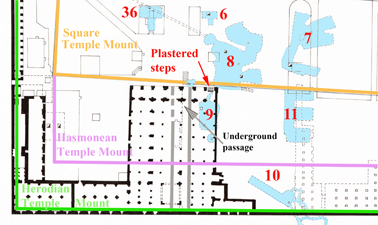 Worshipers in the Hasmonean period, who had not purified themselves before going to the Temple Mount, perhaps had the opportunity to do so in this mikveh, if it was a mikveh indeed.
Worshipers in the Hasmonean period, who had not purified themselves before going to the Temple Mount, perhaps had the opportunity to do so in this mikveh, if it was a mikveh indeed.

